2025 Toyota Tundra review, towing test
One of the world’s biggest and most loved utes has finally come to Australia. It makes some bold claims, so how do they stack up?
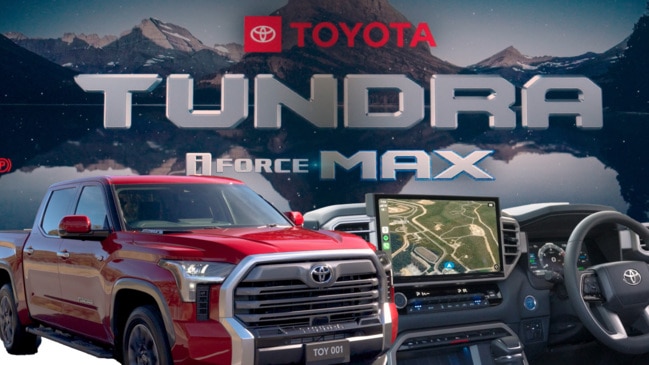
For years there have been big US pick-up trucks on Australian roads, and now Toyota has officially entered the sales race, with the new Tundra on sale here from $155,990 plus on-road costs.
That’s a whole lot of coin, but this is a whole lot of vehicle, too. Almost six metres long, with a massive tray space and huge towing capacity of up to 4.5 tonnes, it offers the Toyota faithful a factory-backed option against the Ford F-150, Chevrolet Silverado and Ram 1500.
Indeed, it is manufactured in the same facility as two of those models, with the Aussie expert team at Walkinshaw pulling left-hand-drive models apart to rebuild them in right-hand drive for our roads. And for the most part, the conversion is a big success.
MORE: The cars that Aussies refuse to give up
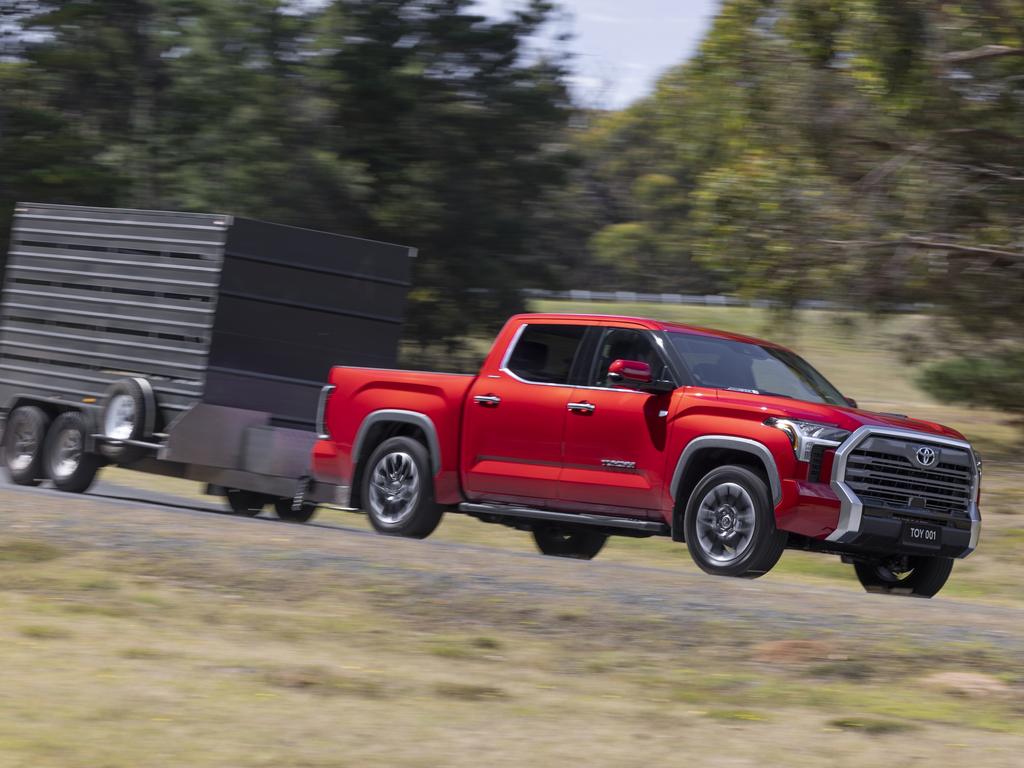
The fit, finish and build quality is very convincing, but there are some finer details that could be better, like the mirrors, which extend beyond the housings and flutter in the wind, home screen controls that are aligned to the passenger’s side rather than the driver (meaning a big stretch to use some menus), and the climate control system still has the ‘sync’ function set for the left-hand side, not the driver. These may be rectified in production models for customers, but they were annoying in this test vehicle.
Otherwise, the cabin is a massive and thoughtful place to be, with ample storage places (a dozen or so cupholders), lots of loose item stowage, and the knobs, buttons and dials are designed to be easy to deal with, including when you’re wearing gloves on the farm.
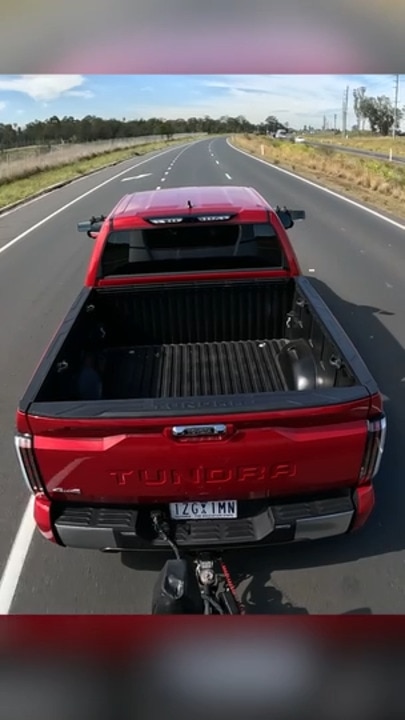
The seats are broad and comfortable upfront, and in the second row there is a massive amount of space – you’ll fit three adults across with ease, and if you’re thinking of it as a family truckster, there are ISOFIX points in the window positions and three top-tether points as well. Charging options and directional air-vents feature, but there aren’t rear climate controls.
In Australia we get the 5’5” tub, generous enough to swallow an Aussie pallet.
It has adjustable tie-down rails and fixed lower tie-down points, and a plastic tub-liner which is not as good as the grippier spray-in options offered in rival trucks. There are no power outlets in the tub, and the spare wheel under the body of the vehicle is a steelie, not a matching alloy.
MORE: End of an era for V8 icon

STANDOUT DRIVING EXPERIENCE
Under the bonnet is a thumping 3.4-litre twin-turbo V6 petrol engine with hybrid technology incorporating a 6.5 amp-hour battery, with the powertrain pushing out a maximum 326kW and 790Nm. It works with a 10-speed auto gearbox, and has part-time four-wheel drive – meaning you can’t drive it in 4H on sealed surfaces.
It’s a cracker of a powerplant, with a sonorous soundtrack that doesn’t make you feel jealous of V8 rivals. It sounds great, and it goes even better, with strong pulling power across the rev range, and a transmission that is smart and smooth in most situations. I did have one or two shunts from the gearbox on deceleration at times, though.
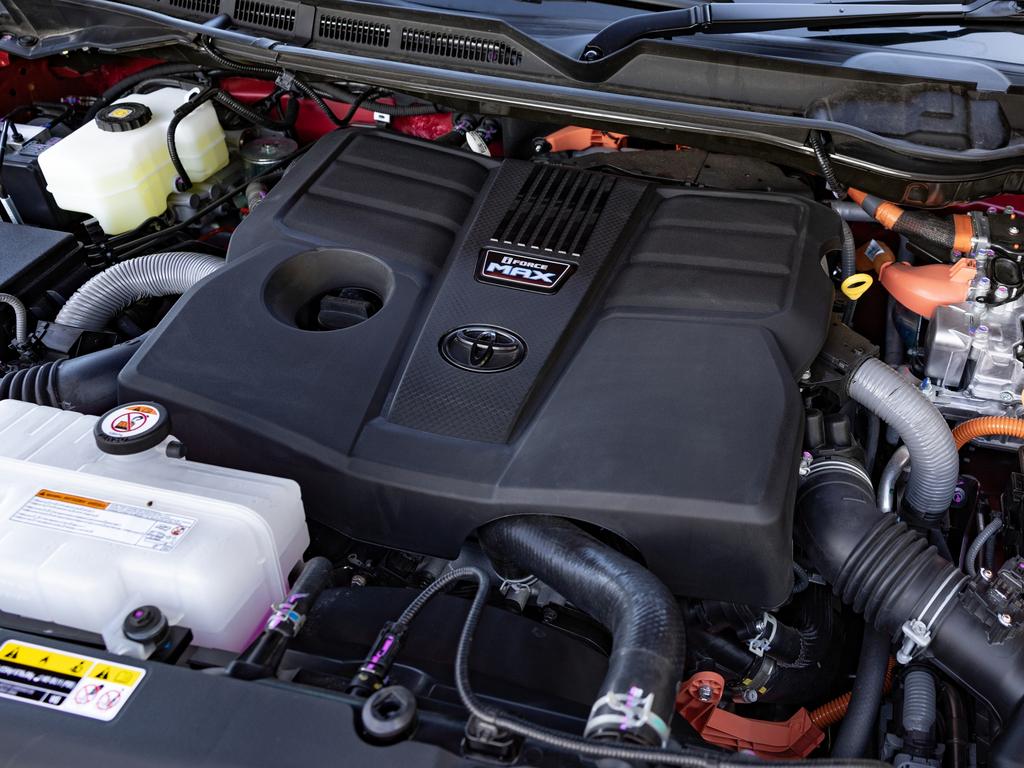
The drive experience is a standout thanks to steering that is easy to judge and nicely weighted, and it needs to be considering the turning circle of this monster is 15 metres. It has a fantastic suspension tune, too, with the coil-sprung rear end offering a firm but composed feel when unladen, and it handles big undulations well, too.
It is a terrific thing to drive as a run-around, but even though it’s a hybrid Toyota, the fuel consumption isn’t astounding. On test, I saw 13.8 litres per 100km, which is the same as I managed in a Ram 1500 V8 recently. There is no official fuel consumption number due to the ute’s high gross vehicle mass.
I also towed with a 3.2-tonne caravan and it was mostly extremely agreeable in terms of the drive experience, despite having a lower-than-desirable hitch point. The powertrain worked well in terms of power and torque, but the fuel consumption on test was on the higher side at 23.8L/100km. I’ve seen significantly lower in a Ford F-150 with a similar towed load.
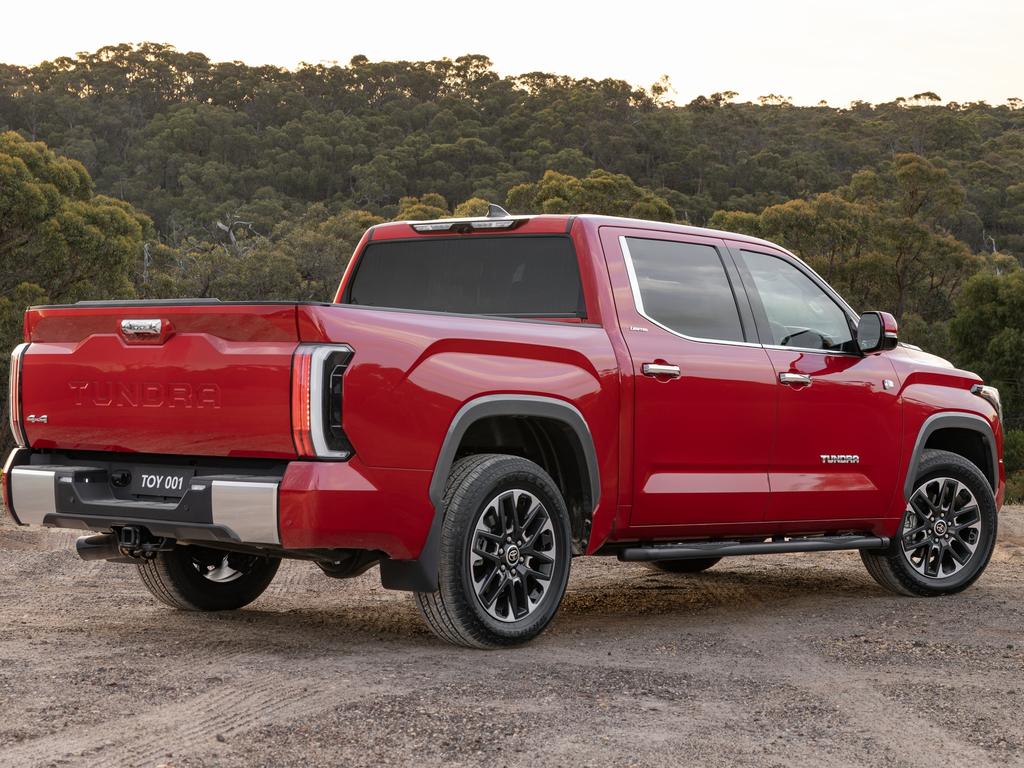
As with other Toyotas, it comes with a five-year, unlimited kilometre warranty, and there’s a seven-year powertrain warranty if serviced on time.
Speaking of, the maintenance requirements are needy, at six months/10,000km between visits, and the first five years are covered by a capped-price servicing plan that totals $4500 over that period … and you have to pay extra for roadside assistance!
However, the biggest selling point will be the backing of Toyota’s enormous network of dealerships and service locations, with almost 300 locations across the country.





